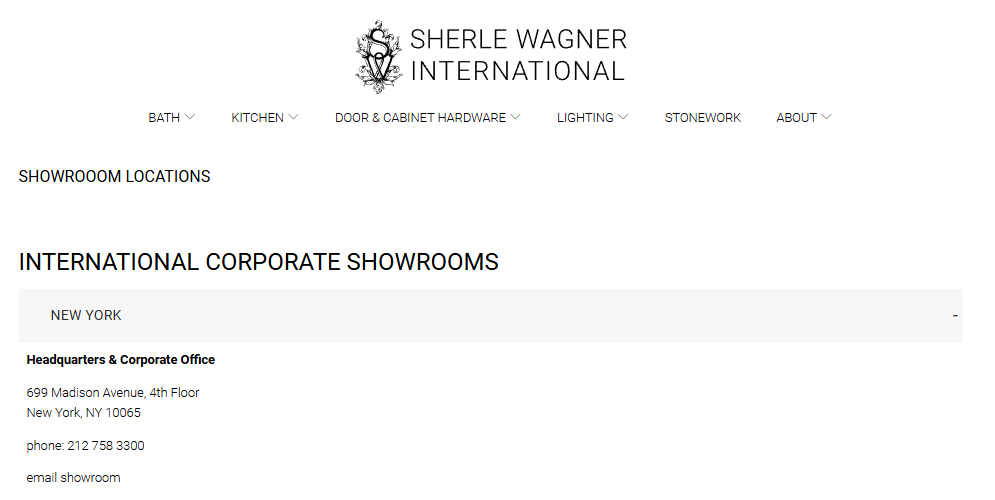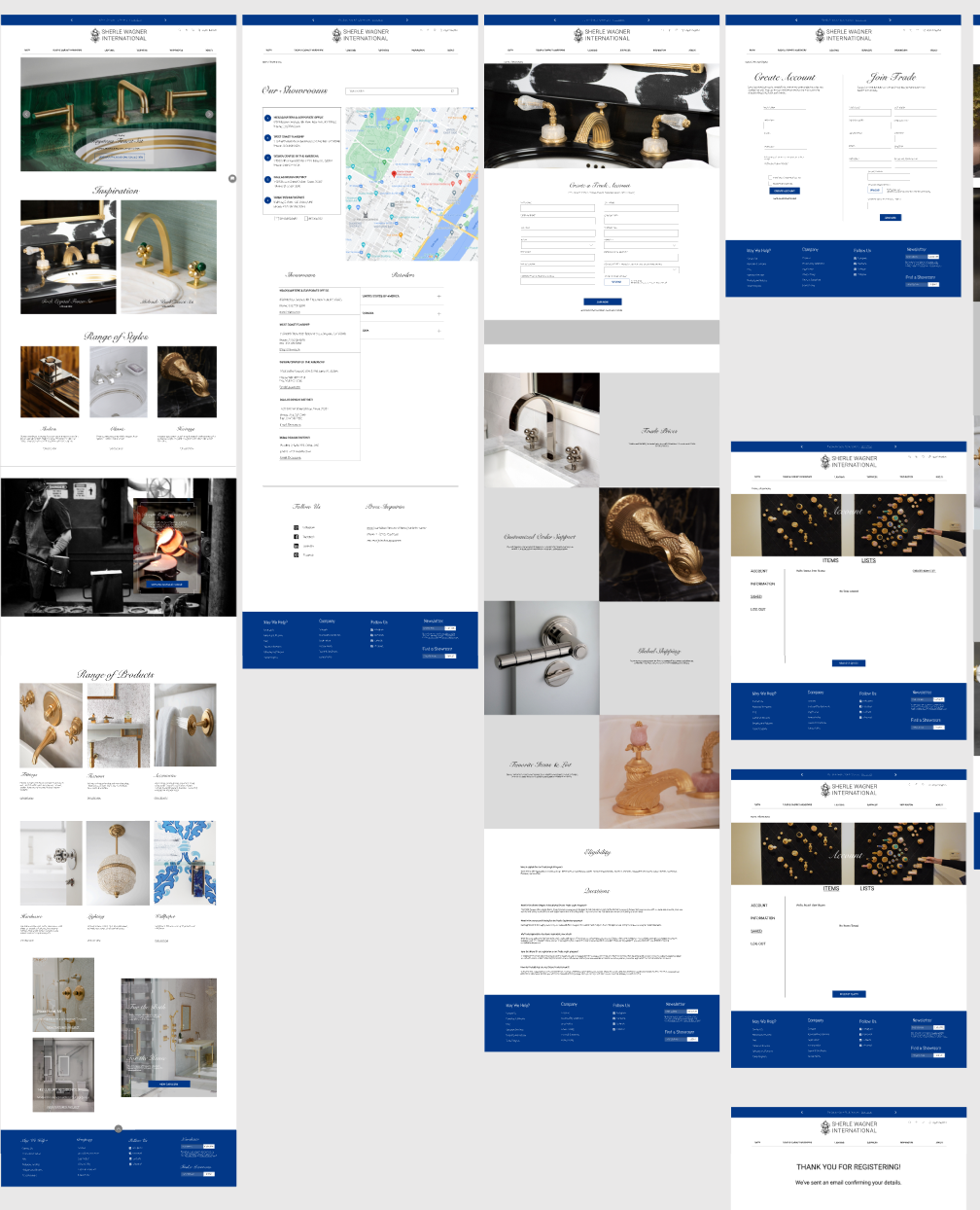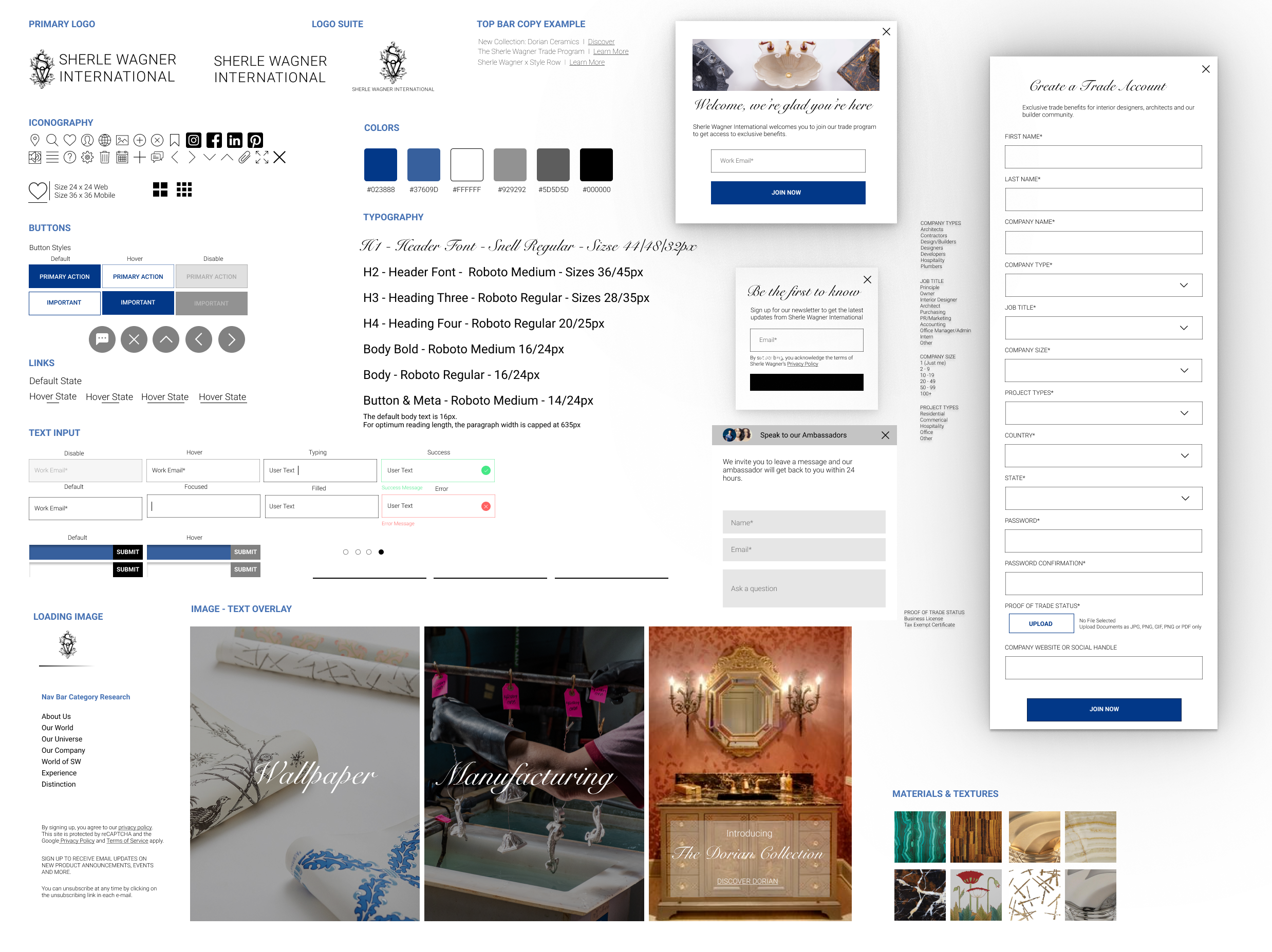Revitalizing a Heritage Luxury Brand's Digital Presence
Led the complete digital transformation of Sherle Wagner International, a heritage luxury hardware and lighting manufacturer. The project involved modernizing their digital presence while preserving their prestigious brand identity and craftsmanship story, ultimately resulting in a 98% increase in qualified leads.
The Challenge
Sherle Wagner International, once a market leader in luxury hardware and lighting, was losing market share to competitors due to an outdated digital presence. The existing website presented several critical challenges:
Complex product catalog with 300+ products, each having 1-4 variations (metal finishes, stone options, sizes, styles)
High bounce rates indicating user frustration
Manual, email-based lead generation process
Disconnected customer journey between digital and showroom experiences
Underutilized brand heritage and craftsmanship story
Poor accessibility standards
Complex showroom location system without modern navigation
Business Goals
Increase qualified leads through digital channels
Reduce burden on sales representatives
Modernize the digital experience while maintaining luxury positioning
Improve product discovery and specification process
Better showcase brand heritage and craftsmanship
Streamline the path from digital exploration to showroom visits
Role & Contribution
As Lead UX Designer, I:
Led research and strategy development
Managed stakeholder relationships
Directed design team of three
Coordinated with development team
Presented to C-level executives
Established measurement framework
Facilitated cross-functional workshops
Research & Discovery
Quantitative Insights
Google Analytics revealed 73% of users abandoning site within first 30 seconds
85% of leads came through manual email process
High search volume for product specifications and pricing information
Mobile users spent 60% less time on site than desktop users
Qualitative Findings
Conducted 24 interviews with:
Current customers
Interior designers
Architects
Sales representatives
Showroom managers
Key findings:
Users valued brand heritage but couldn't find this information easily
Professionals needed detailed specifications for project planning
Customers wanted to research products before contacting sales
Sales reps spent significant time answering basic product questions
Showroom locations and hours were difficult to verify
Solution
Strategic Approach
Digital Product Catalog
Developed scalable information architecture for 300+ products
Created standardized template system for product variations
Implemented advanced filtering and search functionality
Added comprehensive product specifications and documentation
Lead Generation & CRM Integration
Designed intuitive quote request system
Implemented user accounts with product saving capability
Created personalized welcome journey
Connected digital touchpoints to new CRM system
Brand Heritage & Craftsmanship
Developed dedicated heritage section with timeline
Created video content showcasing manufacturing processes
Integrated historical imagery and brand story throughout site
Enhanced product photography to highlight craftsmanship
Location & Showroom Experience
Implemented Google Maps integration
Created filtered search for showrooms and representatives
Added virtual showroom tour capability
Integrated appointment booking system
Technical Execution
Responsive design optimization
WCAG 2.1 AA compliance implementation
Performance optimization for product imagery
Integration with existing ERP system
Custom CRM integration
Advanced search functionality implementation
Results
Quantitative Impact
32% increase in qualified leads
45% reduction in bounce rate
3x increase in time spent on product pages
67% decrease in basic product inquiry emails to sales reps
85% increase in mobile engagement
44% increase in return visitors
Qualitative Impact
Improved sales team efficiency with better-qualified leads
Enhanced brand perception among design professionals
Increased customer satisfaction with self-service options
Better alignment between digital and showroom experiences
Strengthened brand positioning in the luxury market
Lessons & Insights
Balance of Digital and Luxury
Digital efficiency doesn't compromise the luxury experience
Self-service options can enhance premium positioning
Heritage and innovation can coexist effectively
Content Strategy
Product specifications drive engagement
Brand heritage creates emotional connection
Visual storytelling supports luxury positioning
Process Improvements
CRM integration crucial for lead quality
Standardized templates essential for scale
Cross-functional collaboration vital for success
Next Steps
Implement phase 2 features based on user feedback
Expand virtual showroom capabilities
Develop dedicated designer portal
Enhanced analytics implementation
International market expansion support




